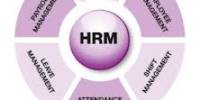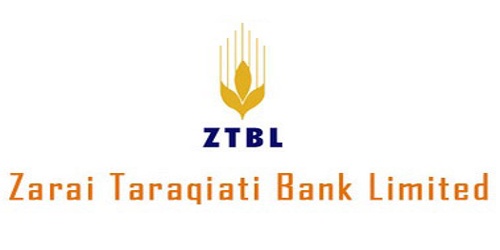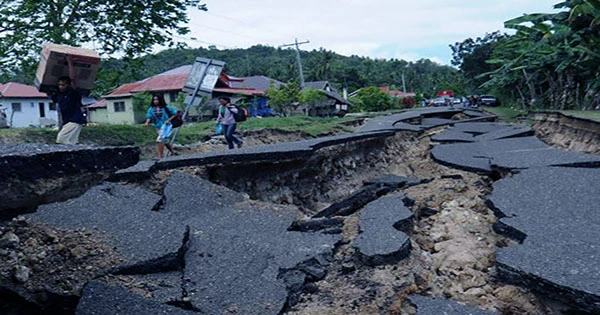Executive Summary
This research report is a partial requirement of the project phase of MBA program, department of Business Administration, PrimeUniversity. The topics of the report are Human Resource Planning of BRAC. Human resources planning is very much important for every business organization. Human Resources may be the most misunderstood of all corporate departments, but it’s also the most necessary. Those who work in Human Resources are not only responsible for hiring and firing; they also handle contacting job references and administering employee benefits.
Human resource planning is the process of acquiring, training, appraising, and compensating employees, and attending to their labor relations, health and safety, and fairness concerns. It’s true that any individual who works in Human Resources must be a “people person.” Since anyone in this department deals with a number of employees, as well as outside individuals, on any given day, a pleasant demeanor is a must.
Human Resources may have gotten a bum rap, but it’s clearly among the most important departments in any corporation. The next time you have to meet with someone from Human Resources, remember that without her, your company might not be running so efficiently. The benefits of globalization have been very unevenly distributed both between and within nations. At the same time a host of social problems have emerged or intensified, creating increased hardship, insecurity, and anxiety for many across the world, fuelling a strong backlash. As a result, the present form of globalization is facing a crisis of legitimacy resulting from the erosion of popular support.
The concept encompasses investment in the skills of the labor force, including education and vocational training to develop specific skills. Human capital is one component of a country’s overall competitiveness. The most successful developing countries, for example, Singapore and Malaysia, are investing heavily in the education and technical skills of their population.
Actually these departments do that work. This department of the organization works with the employee and the staff and worker. This department deals with their job planning and design, recruitment, selection, measure their job performance and target their compensation
Profile of BRAC
1.1 Vision
A world free from all forms of exploitation and discrimination where everyone has the opportunity to realize their potential.
1.2 Mission statement
Our mission is to empower people and communities in situations of poverty, illiteracy, disease, and social injustice. Our interventions aim to achieve large scale, positive changes through economic and social programs that enable men and women to realize their potential.
1.3 Values
- · Innovation
- · Integrity
- · Inclusiveness
- · Effectiveness
1.4 Objective of BRAC
Poverty reduction program’s undertaken so far have bypassed many of the poorest. In this context one of BRAC`s main focuses is the ultra poor.
Given that development is a complex process requiring a strong dedication tp learning, sharing of knowledge and being responsive to the needs of the poor, BRAC places a strong emphasis on their organizational development, simultaneously engaging itself in the process of capacity building on a national scale to accelerate societal emancipation.
The fulfillment of the BRAC`s mission requires the contribution of competent professional committed to the goals and values of BARC, BRAC therefore, foster the development of the human potential of the members of the organization and those they serve.
In order to achieve its goal, wherever necessary BRAC welcomes partnership with the community, like-minded organizations, governmental institutions, the private sector and development partners both at home and abroad
1.5 About the company
BRAC, a national, private organization, started as an almost entirely donor funded, small-scale relief and rehabilitation project initiated by Fazle Hasan Abed to help the country overcome the devastation and trauma of the liberation war and focused on resetting refugees returning from India. Today, BRAC has emerged as an independent, virtually self-financed paradigm in sustainable human development. It on of the largest southern development organizations employing 97, 192 people, with 61% woman, and working with the twin objectives of poverty alleviation and empowerment of the poor.
1.6 BRAC profile at glance
1.6.1 Program Coverage
Districts 64
Upazila/ Thana 480
Villages 68480
Urban Slums 4378
Population covered 100 Million
1.6.2 Development programs
Village Organizations 142117
Membership- Total 4858763
-Female 4727286
-Male 131477
Loan disbursement- Year 2004 Tk.25902 Million
Loan outstanding Tk.14630 Million
Repayment Rate 98.74%
Members’ Savings Tk.7657 Million
Currently Enrolled in BRAC school 1.50 Million
Graduate (Till to date) 2.8 Million
Legal literacy – Courses held 106241
– Learners Completed 2473361
Population Coverage of health program
-Essential health cares 31 Million
-Tuberculosis control program 82 Million
-National nutrition program 13 Million
1.6.3 Commercial Enterprises
Aarong shops 8
Printing press 1
Dairy and Food project 1
1.6.4 Job Creation
Poultry 1698165
Livestock 470778
Agriculture 847574
Social Forestry 75050
Fisheries 277230
Sericulture 19060
Horticulture 179031
Handicraft Producers 15223
Small Enterprises 136159
Small Traders 2635212
Total 6353482
1.6.5 Human Resources
Staff 32652
School teachers 65412
Community health volunteers 29736
Community health workers 2284
Poultry workers 50805
Community Nutrition workers 11988
Nutrition woman members 119658
1.6.6 Program Infrastructure
Regional Offices 137
Area Offices 498
Team Offices 1172
Training center 19
Health center 48
Diagnostic Laboratories 51
School –BRAC Primary 31619
-Pre –primary 16019
Gono kendra (Union Libraries) 878
Kishori Kendra 8811
Handicraft production center 285
Limb and brace center 1
1.6.7 Annual Expenditure
Year Amount Donor Contribution (%)
1998 Tk. 6283 Million 32%
US $ 130 Million
1999 Tk. 7708 Million 30%
US $ 148 Million
2000 Tk. 8024 Million 21%
US $ 152 Million
2001 Tk. 8135 Million 21%
US $ 153 Million
2002 Tk. 9258 Million 20%
US $ 161 Million
2003 Tk. 11471 Million 20%
US $ 196 Million
2004 Tk. 14487 Million 23%
US $ 245 Million
1.6.8 Program support enterprises
Name No. Capacity (Annual)
Poultry firms & Hatcheries 6 13.5 million Chicks
Feed mills 3 40000 MT
Prawn hatcheries 8 15 Million post larvae
Fish Hatcheries 4 5000 Kg fish spawn
Seed processing centers 2 3500 MT
Seed production farms 23 5200 MT
Sericulture
-Silk Reeling centers 3 15 MT
-Grain ages 12 2.0 Million dft
Nurseries 24 21.5 Million saplings
Bull station 1 125000 doses
Iodized salt Industry 1 80000 MT
1.6.9 Related companies/ Institution
BRAC Industries Ltd. Cold storage
BRAC BDMail Network Ltd. Internet Service Provider
BRAC Services Ltd. Hospitality
Delta BRAC Housing finance corporation Land and Housing
BRACUniversity Tertiary Education
BRAC Bank small & medium
Finance & Banking
BRAC Tea companies Tea plantation & production
Documental TM Ltd. Software
1.6.10 BRAC Afghanistan
Working Areas 94 District Offices under
17 Provinces
Community school and studies 83 with 2753 Student
Accelerated learning project (ALP) 73000 students
Fixed health clinics 23
Village organizations 3689 with 72804 members
Loan Disbursement US $ 7485904
National solidarity program 20 districts
Agriculture 19 districts
Training & Resource center 2 inKabul
2. Introduction:
Human resources planning is very much important for every business organization. In international business sector it is more important now a days. It is now very competitive business world. So in this time if any time one to existed and run this competitive business world they needed some new rules and apply some innovative idea and get delivery better items which help them to be best in this world. Human resources planning are one type of department, which is the modern world’s contribution. It is very important department of an organization. They act an important role in the business organization. It helps the organization to run perfectly and help to achieve the organization goal. Naturally human progressing themselves day by day. They make any work broken down and divided it into small and small job, which helps to do the work more effective. They achieve and hold new invention of this world. When we heard these words of “Human resources planning naturally we think that it is related with human activities. And try to come out their new policy to implicate their own goal and to maintain and make a good relation with others organization. Which is most necessary to stay this competitive business world and to be popular in the business society.
2.1 Rationale of the Study
Company have adopted multiple approaches to retain valued talent, including financial incentives, career plans, mentorship programs, and flexible work arrangements, and they place great emphasis on diversity and work life balance in order to compete for the best talent and retain high potential employees. So, this report has been very helpful concerning the process of HR planning.
2.2 Statement of the Problems
The specific questions that were answered by the study were:
- The HR planning of BRAC
- The recruitment and selection process of BRAC
- The training & development, compensation & benefits of BRAC
2.3 Scope and Delimitation of the Study
This project did not cover all the function of Human resources that followed in BRAC.
– The report relied heavily on the personal judgment and observation.
– This report is limited to Dhaka corporate office only.
Salary Administration is the most sensitive part of an organization so that this issue was not covered in this report.
Due to confidentiality of information in the organization it is difficult to get full featured information.
2 months’ time period is very short to study on BRAC.
2.4 Objectives of the Study
- Broad/General Objective: Our objective of the study is to know about the organization and its present activities. Through the study we will try to learn about organization’s policy, procedures, objective, strategic, objectives for its competitive advantage. Beside this we will know how the organization structure is formed.
- Specific Objectives:
To find out the different strategy on HRM.
To evaluate the implementation process of the strategic HRM.
To evaluate the overall working environment of BRAC.
To have an idea the implementation Technique of HRM function.
To Evaluate the HRM practice procedure of BRAC.
To have a practical exposure.
Methodology of the Study
Methods of data collection
To satisfy our objectives requires information from some sources. To the best of our capability we collect data through personal conversation with executives, stuffs, besides this inquires into different type of magazines, published books. Furthermore to know more about we have collected information from the output users.
1. Primary data collection
2. Secondary data collection
1. Primary data collection: Primary data have been collected through interviews with concerned authority of the selected organization. Some data also have been collected through observations.
2. Secondary data collection: Secondary data are very much available in these regard brochures, catalogs, officials’ records of designated organization and other ISPs information as secondary data in this study.
1.1 What is HR?
Human resources (HR) are the people who are ready, willing, and able to contribute to an organizations success.
Human resources (HR): Hiring activities, including recruitment, interviewing, training, layoff planning, including out placement, and counseling.
Human resources (HR) segment contains the full set of capabilities needed to manager, schedule. Pay, and hire the people who make a company run. It includes payroll, benefits and ministration, applicant data administration, personal development planning, workforce planning, schedule and shift planning, time management, and travel expense accounting.
1.2 What do you mean by Human Resources Planning?
Human Resource Planning is a process of deciding in advance what is to be done in future regarding human resource of an organization. It deals with the activities and steps to be taken in regard to demand for and supply of human resources as well as their proper utilization.
Human Resource Planning includes the determination of existing human resource needs and finding out the ways of the human resource to be needed for the organization. That is Human Resource Planning is a blue print of existing human resources and required number of human resources in future.
Human resource planning is the key between a firm’s strategic plan and its overall human resource management function. The human resource plan is a projection of how the fire plan acquires and utilizes human resource.
Human resource planning is the sum total of the plan formulated for the recruiting, screening, compensation, training, job designing, and work rules of an organization’s human resource. It is a process deigned to translate the corporate plans and objective into future quantitative and qualitative employment requirement, together with plans to fulfill that requirement.
1.3 Definition of Human Resource Planning?
1. Robbins(1998) defines HRP as “The process by which an organization ensures that it has the right number and kind of people at the places, at the right time, capable of effectively and efficiently completing these tasks that will help the organization achieve its overall objectives.”
2.According to Tripathi “Human resource planning may be defined as a strategy for the procurement, development, allocation, and utilization of an enterprise’s human resources”.
3. In the words of Coleman Bruce, “HRP is the process of determining manpower requirements and the means of meeting those requirements in order to carry out the integrated plan of the organization.”
4. According to William F. Glueck, “Human resource planning is the process by which management attempts to provide human resources to achieve organization objectives”.
It then translates the organization’s objective and plans into number of people needed to meet those activities. Through planning management makes balance between demand for and supply of right number and kind’s people at the right time. It is a supply and demand calculation. Manpower is an asset; it is asset which appreciates- which grows over day by day. Machines depreciate as time goes on.
By consulting the above definitions, we can get some elements of HRP. These elements are listed in the following points:
1. Establishing and recognizing the future jobs requirements.
2. Identifying deficiency in terms of quantity
3. Identifying deficiency in terms of quality and specification
4. Identifying the sources of right type of man
5. Developing the available manpower and
6. ensuring the effective utilization of work force.
A manpower plan must be a set of two plans: a manpower demand plan and manpower supply plan.
1.4 Why adopt HR Policies?
Every organization should have human resource policies as they ensure the following benefits.
1. The work involved in formulating human resource policies requires that the management give deep thought to the basic needs of both the organization and the employees the management must examine its basic convictions as well as give full consideration to the prevailing practices in other organizations.
2. Established human resource policies ensure consistent treatment of all human resource throughout the organization. Therefore favoritism and discrimination are minimized.
3. Continuity of action issued even though top management human resource change. The manager of a company may possess a very sound human resource management philosophy. The tenure of office of any manger is finite. But the organization continues. Policies promote stability.
4. Sound human resource polices help resolve intrapersonal, interpersonal and inters group conflicts.
5. Human resource polices serve as a standard of performance. Actual results can be compared with the policy to determine how well the members of the organization are living up to the professed intentions.
1.5 Benefits of Human Resource Planning.
By formulating a well-conceived HRP, some benefits can be accrued by the organization as well as by the human resource management. These benefits can be summarized in the following points:
1. Better view of business decision: Upper management has a better view of the human resource dimensions of business decisions.
2. Minimum cost: HR costs may be lower because management can anticipate imbalances before they become unmanageable and expensive.
3. Anticipated talent: More time is available to locate talent because needs are anticipated and identifies before the actual staffing is required.
4. Management development: Proper HRP can ensure the development of managers through proper training programs.
5. Improved utilization: HRP improve the methods of Utilization of human resource of an organization.
6. Economy in hiring: Effective HRP can set a system of hiring human resource for the organization with minimum cost and efforts.
7. Information base: HRP helps in expanding the human resource management information base to assist other human resource activities and other organization units.
8. Coordination: Coordination of different human resource management programs and activities is possible with the help of a well-established human resource planning.
9. Technological change: Rapid technological changes make human resource planning more important as the demand for new skills is increasing.
10. Reduction of wastage: Proper manpower policy will reduce wastage rate. There are two of wastage – a. voluntary(marriage, pregnancy, immigration, early retirement) and b. incidental( death, retirement and dismissal).
11. Corporate asset: Manpower planning stresses the value of human resource as corporate assets.
12. Gradual growth: Interest in manpower planning is increasing because the size of the organization is gradually increasing.
If human resource manager makes a good plan all activities are expected to be performed timely and properly and then organization may be benefited in many wags.
1.6 Human Resource Planning Method.
There are four methods of formulating human resource planning. These methods are used to determine the requirements of personnel. By using these methods, human resource planning unit can formulate an effective human resource plan for the organization.
1. Annual estimate of expected vacancies: By using this method requirements of human resource for the whole year can be estimated. Thus organization can also make necessary arrangement for procuring suitable human resources.
2. Long range estimate of expected vacancies: This method helps the human resource manager to make a long range estimate of human resources for the next few years(usually for more than 3 years).
3. Man specification requirements: By resorting the third method of human resources planning, human resources needs can be specified for the departments. Not only that human resource with specific qualification can also be identified by this method.
4. Job requirements: Every job requires separate type of human resource for proper functioning. This method helps HRP unit/manager in determining job requirement for the organization.
Human resource manager will examine the organizational structure regularly to anticipate its manpower requirements. A job analysis must be made to know the requirements of a particular job.
1.7 Components of Human Resource Planning.
Human resource planning has several components. Anthony and his associates have identified three component of HRP. These components can help the human resource planner to know the nature of economic forces available in the business and industrial area, latest position of demand and supply of labor in the market and lastly possibility of skills change and shortage or surplus of human resources. In the following paragraphs these three components are briefly discussed:
1. Economic forces
2. The labor market
3. Skill change and human resources shortage
1. Economic forces: National employment and economic policy planning influence human resource planning. National economic policy planning set the stage for national policy in training and education and level of economic activity though monetary and fiscal policy.
2. The labor market: Labor market is the pool of qualified applicants from which a company can line. The relationship between organizations goes requirements and the available pool of skill and abilities is typically viewed by manager is as a sequential process whereby the organization first establishes the best goes structure in terms of job content and task assignments determine each goes worth in the production process and proceed to hire develop is a resources that retch this requirement.
3. Skill change and personnel shortage: Change in the labor market have led in skill shortages as well as over supply. When the human resources educational skill min differ significantly from one skill required by employers, personnel shortage develop. Employment have to be open but cannot find people with the skill needed. Many people who want goes are not hired because they do not have skill demanded.
1.8 Human Resource Planning Model.
Human resource planning model organizations are more or less formulated up to the mark. They do not usually follow the model of process developed in the foreign countries. Human resource planning model can be proposed for Bangladeshi organization, which can be glanced in following diagram:
1. Mission
2. Objective and goal
3. Policy and Strategy
4. Organization Structure
5. Manpower
6. Follow up
1.Mission: Every organization should set it mission to improve the Human resource to reach the mission.
2. Objectives and Goal: After setting the mission objectives, goal must be established reasonably to reach the mission.
3. Strategy: Some action steps for the fulfillment should be undertaken in order to make the organization goal oriented.
4. Structure: A structure design showing the function relationship of executive and employees in the organization should be made.
5. People: A group of people should be deployed for implementing the strategy and achieving the goal.
6. Follow Up: This is the last stage of Human resource planning system in Bangladesh. In this stage manpower activities should be properly supervised and following up in accordance with the mission established. This stage can further help in re-designing the organization mission.
Literature review
5.1 What is Management?
A set of activities directed at an organization’s resources with the aim of achieving organizational goals in efficient and effective manner.
Management is the application of planning, organizing, staffing, directing, and controlling functions in the most efficient manner possible to accomplish objectives.
5.2 What is Manager?
Manager is this person whose primary responsibility is to carry out the management process.
HRM definition
Human Resources Management (HRM) is the part of the organization that is concerned with the “people” dimension. HRM can be viewed in one of two ways.
***First, HRM is a staff, or support, function in the organization. Its role is to provide assistance in HRM matters to line employees, or those directly involved in producing the organizations good and services.
***Second, HRM is a function of every manager’s job. Whether or not one works in a “formal” HRM department, the fact remains that to effectively manager employees requires all managers to handle the activities.
HRM involves all management decision and practices that directly or influence the people, or human resources (HR), who work for the organization.
In recent years increased attention has been devoted to how organizations manager human resources (HR). This increased attention comes from the realization that an organizations employee enable an organization to achieve its goals, and the management of these human resources (HR) is critical to an organizations success.
HRM is the policies and practices involved in carrying out the “people” or HR aspects of a management position, including recruiting, screening, training, rewarding and appraising.
HRM is the set of organizational activities directed attracting, developing, and maintaining an effective workforce.
HRM takes place within a complex and ever-changing environmental context.
HRM is concerned with attracting, developing, and maintaining the HR an organization needs.
5.3 Human Resources (HR) Movement
HR is the scientific management movement heavily emphasized the technical, aspects of work design; the human relation movements emphasize the importance of the human element in job design.
Recruitment and selection
Conditions of Employment
Classification of staff:
There are five types of BRAC staff. Those areas-
- Regular Staff
- Project Staff
- Service Staff
- Contract Staff
- Part Time Staff
- Regular Staff
There are levels of Employee.
The staff will work one year as a trainee before being permanent.
After being permanent the staff may be come under the shade of provident fund.
- Project Staff
During a running project; the staff is appointed on the basis of project duration. Posting from the appointed project is not possible.
Project staff will get benefit and opportunity on the basis of rules and regulation of the project and terms and condition of appointment letter.
- Service Staff
i) Service Staffs are graded staff.
ii) Period of probation is not applicable for the service staff.
iii) Service staff can be the member of provident fund after they join in the job.
- Contract Staff
The duration of employment depends on the contracted time -limit.
Job benefit and opportunity will determine by contract.
The time-lime of contract can be renovated.
Period of probation is not applicable for the contract staff.
Contract staff will not get the benefit of provident fund, gratuity for service and festival allowance.
Contract staff will enjoy vacation as like as regular staff.
- Part Time Staff
i) Part time staff is appointed on the basis of hour or day.
ii) Other job benefit is not applicable except daily allowance.
iii) The time limit of job will not more than eleven month.
Staff Recruitment Process
BRAC will follow the following procedure for staff recruitment process:
Staff will appointed as per authority catalogue. It should authorize by executive director to appointed staff in head office.
To meet urgent need Chairman or Executive can directly recruit staff.
At the start of each year; head of every department send their needs of employee to the human resources division. It has a chance to examine the staff demand after every three month.
Human resources division will make its annual staff recruit plan on the basis of staff division.
Staff should recruit through advertise in newspaper or other media.
The application for job should in specific form.
The interview card will send before 15 days of recruitment examination through mail or courier service.
If needed then recruitment examination will be written, viva and —–
The human resources division must authorize the final result.
Rules of Recruitment
BRAC will follow the following rules for staff recruitment process:
Any BRAC staff cannot directly apply for new post or employment. But with recommendation of coordinator and approval of head, he/she can apply. If the staff becomes selected for the new post then as the rules of BRAC he/She has to resign from his/her previous job.
7th or more than 7th level employee’s minimum educational quality will be masters. But Doctor, Engineer etc skill centered post will consider the minimum educational quality as bachelor.
Any fired staff of BRAC cannot apply in BRAC.
If the age of applicant is above 50 years then he/she will appoint as contract staff.
The highest level of car driver is 6th and office assistant 3rd and highest grades of security guards are 3.
Staff Recruitment Board:
The representative authorized by the human resource division and nominated by the program will take the viva of the applicants.
To ensure the quality and subject oriented staff recruitment, the orientation of board member may be held if it is necessary.
If any relative applicant applies then it should avoid from being the board member.
At least one member of board should come from the human resource division.
Deployment of New Staff:
Regular staffs have to agree to work any place where BRAC operate their program in Bangladesh or aboard.
Male staff may be posted in any district except his own.
Joining of New Staff:
The staff will join on his/her specific joining date specified by the BRAC. In case of head office or field office, each staff should have joined his/her work before 9.00 am. Staff can join on his work within seven days of his/her joining date and local authority can accept the joining report. After seven days it is not possible to join without the permission of human resource division. The new staff will submit the following papers or documents when he/she joins:
- Interview Card
- Bond of Security
- Identity (Certificate issued by Chairman)
- Blood test report
- Deployment report issued by Turk
Full Time Service
The service of BRAC staff is full time service that so no staff can do any part time job during he is on service in BRAC. The staff cannot join any post of other corporation, which gives him salary without the permission of executive director.
Time Table of work
The working day of BRAC head office is Sunday to Thursday. The Saturday and Friday are the weekend holiday. But in some case authority can change the working day or time.
The office time of BRAC head office is 8.30 am to 5.15 pm. It includes 30-minute lunch break.
For the field worker, working day will be Saturday to Thursday. Friday will be the weekend holiday. The daily office time is 7.00 am to 5.00 pm. It includes lunch break of 1.00 pm to 3.00 pm. Only those staff who will do the field work can get this opportunity. Those worker who will do the desk work will get 1 hour lunch break. Notable that, in both case breasts feeding mother will get 30 minute extra time.
On the menace period female worker have to do deskwork at least two day.
Authority can change or reschedule the timetable if necessity arises.
Authority can open office on holiday to face the natural disaster.
Record of Attendance
All staff should have to sign in the attendance register/punch identity card in attendance time clock kept in workplace to record his attendance. Every field worker has to sign in the attendance register before going to the fieldwork.
Every staff should attend in office timely. If any staff attends after 15 minute of scheduled time then he/she will consider as late——–. If any staff comes lately 3 times in a month then it will consider as his 1-day casual leave.
If any staff comes lately 7times in a month then the coordinator of the staff will give him a warning notice. One copy of that warning notice will send in human resource division. If any worker gets continuous 3 warning notice then the staff may be fired.
If any field worker is on leave then it should have a clear description of his leave and types of leave in the register book.
Period of Probation
All the regular staff will work one year as a trainee before his/her job confirmation.
The period of probation of any staff cannot extend.
Period of probation is not applicable for service staff and contract staff.
Confirmation of Service:
If regular staff passes his/her period of probation in satisfactory level then his/her service will confirm after one year.
In field workshop the area manager or second coordinator will approve the confirmation of same areas staff.
The staff will get an increment during the confirmation of service. This increment is not applicable when the grade of staff is up grading on next grade.
If a staff join within 1st half of a month then he/she will confirmed on that month but if he/she join 2nd half of the month then he/she will confirmed on next month.
The evaluation form of staff’s skill will have to send in human resource department before 1 month to confirm his/her service.
The approval of confirmation will follow the authorized catalogue.
If any worker becomes unfit for confirmation then he/she will release during his period of probation.
Selection of Manager
Head of the program will make a ‘Manager Selection Committee’ with the representative of human resource division.
Manager Selection Committee will make the criteria of manager selection.
Related program officer will make a list of candidates on the basis of criteria and will send the list to the human resource division.
Manager Selection Committee will finish the selection process through examination of the listed candidates.
| BRAC closings could hurt recruiting | ||
| After weighing the initial impact of the Defense Department’s base realignment and closure (BRAC) recommendations over the weekend, several members of the independent BRAC Commission yesterday urged the Pentagon to release quickly the certified data and justification sheets that influenced the decisions. That information is key in filling some major gaps in the commission’s ability to assess the Defense Department’s recommendations, several members indicated during a presentation of the Pentagon’s BRAC recommendations and methodology. According to Michael Wynne, the undersecretary of defense for acquisition, technology and logistics, the certified data should be released to the commission by the end of this week. Also present at the hearing were Defense Secretary Donald Rumsfeld; Gen. Richard Myers, the Chairman of the Joint Chiefs of Staff; and Phillip Grone, the deputy undersecretary of defense for installations and environment. Several members of the commission have been vocal about the potentially adverse effect the Pentagon’s BRAC decision will have on National Guard and Reserve recruitment and retention. The Defense Department decided to close hundreds of National Guard and Reserve facilities to consolidate facilities into 125 “armed forces reserve centers,” slated for both Guard and Reserve members. “When I look at the Guard and Reserve units … you are going to have a serious enlistment problem,” said James Bilbray, one of the commissioners. The consolidation would make it even harder for the National Guard and Reserve to retain their forces if members have to travel more than 50 miles to report to their bases. The Guard and Reserve already are under high operational stress. For example, the Hulman Regional Airport Air Guard Station in Indiana, slated for realignment, will lose all of its air assets, said retired Air National Guard Brig. Gen. Steven Koper, who is with the National Guard Association in Washington. Some of the airplanes will go to Fort Wayne, Ind., some 210 miles away, he said. One justification for the move was the proximity to Fort Wayne, but a 210-mile commute will weigh heavily in members of the Guard’s decisions to reenlist, Koper said. Leaving the Hulman base only with support units but no aircraft to support is also going to play a role into members’ considerations, he said. The Defense Department “skewed the findings against the Air National Guard,” Koper added. The consolidation of the Guard and Reserve units was meant to bring the units to the right size, Myers explained. Right now, in the Air National Guard, for example, there are only “small pockets,” with small force numbers, which makes it “unwieldy” when trying to access these disparate units for missions, he said during the commission’s hearing yesterday. The Defense Department is trying to bring those units to the right size so as not to have to go to five or six units to find enough aircraft to satisfy a mission. Commissioner Phillip Coyle, meanwhile, expressed concern that the Pentagon’s BRAC recommendations only account for 15,000 service members out of the approximately 70,000 that are supposed to return to the United States from overseas bases. The commission has to deal with “55,000 unaccounted for” and an additional troop increase in the Army, Coyle said. It is important to get that data and justification sheets, said commissioner Harold Gehman, a retired Navy admiral. The commission was asking its questions without a “deck of cards,” he said at the hearing. “We are scratching our heads over some issues,” he added. The chairman of the commission, Anthony Principi, questioned whether the Defense Department synchronized its decisions with the ongoing quadrennial defense review, the overseas basing commission’s report and several studies, including an air mobility study. “Is BRAC the cart before the horse?” he asked. Rumsfeld, however, assured Principi that the decisions were informed by previous BRAC rounds, previous quadrennial review and information from the ongoing quadrennial review. If the stops to take all studies into consideration, “nothing will ever happen,” Rumsfeld said. | ||
Training and Development
Pre-Service Training
After primary selection of staff; all selected staffs have to attain in a pre-service training for their final selection. Ninety percent of the participant will finally select considering their skill. Those who are failed to final select will get TK. 50 per day as an allowance for their participation.
Performance Appraisal System
- Performance approval is a continuous process. But the performance of all staffs will evaluate one time formally in a year.
- Up to the 5th level employee the performance approval period will be the month October to September (1 year) and for 6th and above levels staff the performance approval period will be the month April to March (1 year).
- The head of related program will fill up the evolution form of up to 5th level employee and send within 30th September and evaluation form of 6th to above all levels employee will send within 31 March.
- Before starting the approval system coordinators will follow the staff’s evaluation guidance.
- Nearest coordinator should have to ensure the collection of evaluation form.
- On the basis of evaluation form the human resource division will finish the approval system on the month of November and May.
- The evaluation form fills up by the authorization will kept in the personal file of staff for further decision.
Training and Higher Study
- If any staff wants to part time or full time higher study or train in country or aboard then he/she has to fill up an application form and send it to the human resource department with the recommendation of program manager. Human resource department will approve the proposal from executive Director with the recommendation of director, human resource department.
- If any staff wants to join in international workshop, seminar or meeting then he/she has to fill up an international traveling authorization form and send it to the human resource department with the recommendation of program manager. Human resource department will approve the proposal from executive Director.
- Only those regular staff whose services are confirmed and pass two years in BRAC can be nominated for training and higher study.
- If BRAC arrange training and higher study then the staff will get leave with salary. The condition of this type of leave are following:
- The leave period will count at the start of journey to re-join on BRAC.
- If BRAC bears the cost of higher study or training then the staff should have to sign in a contract paper.
- If any staff resigned from his/her job before contractual period then he/she has to pay the amount on the basis of contract.
- The staff cannot get the opportunity of any other leave when he/she is consuming the training or higher study leave.
- The staff will get the festival allowance when he/she is consuming the training or higher study leave.
- For nomination of national or international travel, training or higher study, the staff have to send related papers such as invitation card, sponsorship, photocopy of ticket etc to the human resource department.
- The staff himself/herself will do everything related his/her ticket.
- If the staff failed to submit the cost (financial statement) of his/her training or higher study to the human resource division then human resource department will make the contract paper for at least two years.
Major findings of the study:
- The organization has a global human resource management.
- The organization has a prescribed salary structure.
- The organization has provided provident fund & gratuity facilities.
- The accounts department has professional accountant.
- The training department has needs more trainers.
- They have to recruit technologically sound people for their future project.
- The organization has to motivate the different personnel & provide different facilities to get best effort from them.
- Technical support department must be more conscious about customer care.
- The organization has human resource inventory system.
- The organization still practicing performance appraisal whereas they should practice performance management.
- The organization is not focusing on talent management process.
- The organization is still not focusing on their employment branding.
- Organization is doing lot of philanthropic activities and corporate social responsibility to create their global brand.
Recommendation
Considering the above findings Organizations need to consider their expense on the strategic direction. Company has to understand competitor’s strategic moves. As its activities scattered every neck of the world in Bangladesh. They have to take consumer claim fairly solve them in efficient way. Company has to give efforts on the international expansion in order to subsidies risk. Company need to train to their sells representatives for the execution of their product.
Some recommendations are mentioned below for improving the organization.
- Cultural training must be provided for employees to do so collaboration with other culture.
- Must be careful continuous running of the total system, if any problem occurs the organization must have the back up support.
- The organization has to provide standard compensation package to the employees compared with other global organization.
- The organization must have planning to retain their talent.
- The organization must try to get the competitive advantage.
- The organization must try to practice performance management.
Conclusion
With a view to analyzing the status of BRAC applied in indeed very much consistent and relevant to develop the rural areas. Human resource management is the process of acquiring, training, appraising, and compensating employees, and attending to their labor relations, health and safety, and fairness concerns. It’s true that any individual who works in Human Resources must be a “people person.” Since anyone in this department deals with a number of employees, as well as outside individuals, on any given day, a pleasant demeanor is a must.
In the light of above information we find that This Organization has excellent competitive advantage than its measure competitors. It is also positive considerable performance of the organization merging internationally. Besides this Organization is giving efforts to introduce different types of problem. On the other hand to make Organization’s business position strong. Human resources management is very much important for every business organization. Human Resources may be the most misunderstood of all corporate departments, but it’s also the most necessary. Those who work in Human Resources are not only responsible for hiring and firing; they also handle contacting job references and administering employee benefits. Actually these departments do that work. This department of the organization works with the employee and the staff and worker. This department deals with their job planning and design, recruitment, selection, measure their job performance and target their compensation.
















